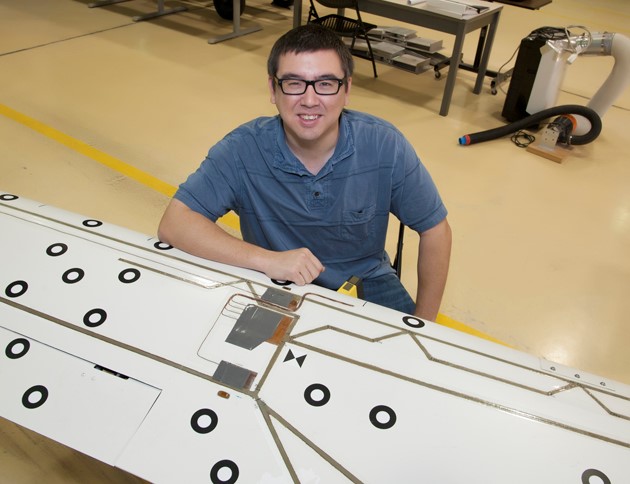
Innovator Peter Suh develops technologies to suppress flutter on light, highly flexible aircraft at NASA’s Armstrong Flight Research Center. (Photo by NASA/Lauren Hughes)
I am an aerospace engineer in the Controls Branch at NASA’s Armstrong Flight Research Center. I grew up in a rough neighborhood in Ohio. My parents enrolled me in a school that would separate me from whatever was happening on the streets. People started rewarding me for working hard. That led to a public high school honors program and Georgia Tech. I joined NASA through the co-op program.
When I was a co-op, my branch chief, Steve Jacobson, tasked us with figuring out how to model and ultimately suppress flutter on lighter, highly flexible aircraft. And he was very clear about the priority being not only putting pilots in them but also returning them to their families for dinner.
Are there aspects of your work that you find particularly rewarding?
One that comes to mind is the code we developed that has been packaged as a modeling and simulation tool called Easy Aeroservoelasticity or EZASE.
What does this invention do?
EZASE is open source MATLAB®- based software that helps engineers understand aeroservoelastic phenomena in flexible structures. It is a finite element modeling and simulation tool for aeroservoelastic analysis of rectangular wings with trailing-edge control surfaces. It allows comparisons to experimental studies, such as ground vibration testing, cantilever beam analysis, and wind tunnel testing.
The primary code links structural dynamics and aerodynamics together to produce a wing in flutter which can be controlled. The wing may include control surfaces, or they can be excluded. A state-space model with control surface inputs and accelerometer outputs can be produced.
What problem does this technology solve?
We first developed EZASE for the engineers developing the X-56A for analysis and control design of flutter or gust-load alleviation. The Multi-Utility Technology Testbed is a small, low-cost, modular, remotely piloted experimental aircraft with wings that are long, thin, and have a high aspect ratio, which are susceptible to uncontrollable vibrations.
EZASE produces models in seconds and enables easy modification of a full range of parameters. It also makes videos for intuitive understanding of gust/flutter dynamics.
Who else might benefit from this technology? What other applications do you envision?
Because it includes tutorials on structural finite element modeling and how to code doublet and vortex lattices, EZASE is helpful for students. In fact, one of the best parts of my job is taking calls from college students and the occasional professor.
Is there anything else you want us to know about your innovation?
Distributed through the NASA Software Catalogue, EZASE was downloaded more than 50 times in a 2-year period.
Whom should I contact if I want to know more about this technology?
Armstrong’s Software Release Authority Earl Adams
Learn more about this technology here.
MATLAB is a registered trademark of The Mathworks, Inc.



